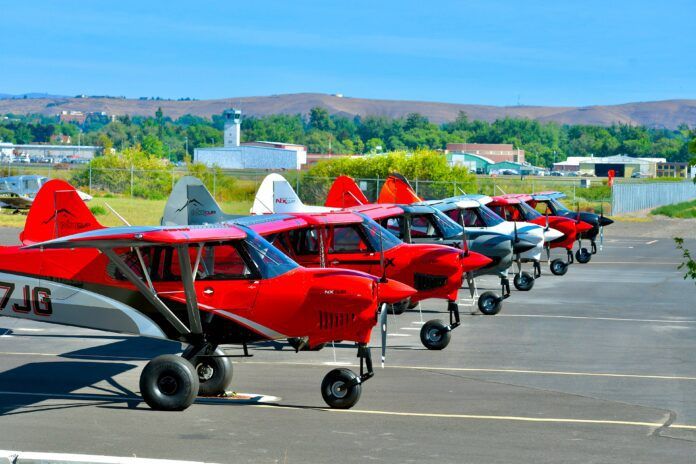In what’s surely a first for a small aircraft company, Yakima-based CubCrafters has announced it plans to raise investment capital by selling preferred stock to customers and aviation enthusiasts. The company will float the offer under the Security and Exchange Commission’s Regulation A, which exempts the usual registration requirements for traditional initial public offerings.
Starting this week, CubCrafters says, would-be investors can make non-binding reservations to buy shares at the issue price by following this link. The issue price will be $5 with a minimum investment of $400. The company said making reservations now will lock in the share price.
“With the significant increase in backcountry flying, demand for our aircraft continues to grow. We have a two-year plus backlog of orders and there is no end in sight,” said Patrick Horgan, CubCrafters President and CEO. “Although the order book is full, like every other company, CubCrafters has experienced delivery and production delays due to supply chain shortfalls.” Additional investment capital, said the company, will allow expansion, development of new products and faster times to market.
CubCrafters was launched by the late Jim Richmond in 1980 as a restorer of tailwheel utility aircraft, especially the Piper Super Cub. It manufactures light sport aircraft, kits and two certified aircraft, the tailwheel XCub and the nosewheel NXCub. The aircraft are on display at AirVenture and are available for test flights.
A public offering is a departure for small aircraft companies, which heretofore have been funded by deposits from potential buyers or private capital.




































I wish them all the luck.
A good company making good planes mostly by hand in my backyard in Washington State.
Amazing what even a basic airplane costs nowadays though.
I hope it stays in ‘Merica.
When I was shopping for a plane a couple of years ago I really wanted a carbon cub. They’re priced very high in comparison to other light sport planes and so I went with another choice. They are amazing planes, but at the same time, I don’t know how an infusion of money is going to help with supply chain issues. You could have all the money in the world and nothing’s going to change that. We certainly did not have supply chain issues 2 years ago did we?
Two things have helped me build my small manufacturing business: keep it 100% private to avoid the influence from other owners with little skin in the game, and use only US-made materials and components. My criteria for suppliers and fabrication partners – I should be able to reach them by car within one hour. As a Christian-owned company we will generally seek out other Christians as our suppliers. Works great. We have zero supply chain issues. Decisions are influenced solely by customer input and our own innovation. Growth might be slower than otherwise possible, but we prefer growing something solid like an oak tree as opposed to a fast-growing pine that gets knocked over by the first gust of wind. Some aircraft components are of course nearly impossible to source in the US.
Excellent work Kent!!!
I’m gonna go out on a limb here and guess Kent isn’t making consumer electronics.
👍👍👍👍👍
Well done Kent.
I wish CC the best and love their products. This would definitely be one of my lottery planes, along with a Kodiak. That being said, putting one’s money in a pile and burning it is a marginally more efficient way to lose money than investing in aviation.